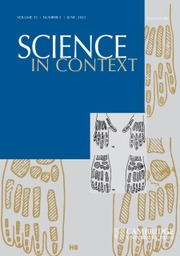Article contents
Continual Fascination: The Oscillating Universe in Modern Cosmology
Published online by Cambridge University Press: 09 November 2009
Argument
Until the mid-nineteenth century the age-old idea of a cyclic or oscillating universe belonged to philosophical and religious discourse, with little connection to the physical and astronomical sciences. It was only with the emergence of thermodynamics, and even more so with the general theory of relativity, that it became possible to discuss the hypothesis within a scientific context. This paper follows the development of oscillating cosmological models in the twentieth century, when they were often discussed if rarely taken very seriously. How is it that this conception of the universe was seen as both fascinating and controversial? Can the persistence of such models be explained on a scientific basis alone? The idea of an oscillating universe has been in crisis several times, but recently it has experienced a spectacular revival in the form of models inspired by string theory and other theories of quantum gravity. This paper argues that the current revival of interest in cyclic models is not primarily rooted in their “aesthetic” qualities, as used to be the case. With the maturation of cosmology following the discovery of the cosmic microwave background in 1965, the hypothesis has become part of the discourse of modern theoretical cosmology, and as such it is discussed within a normal scientific context. On the other hand, extrascientific considerations continue to play a role, and they probably always will. The heritage from the past is still visible.
Information
- Type
- Research Article
- Information
- Copyright
- Copyright © Cambridge University Press 2009
References
- 12
- Cited by

